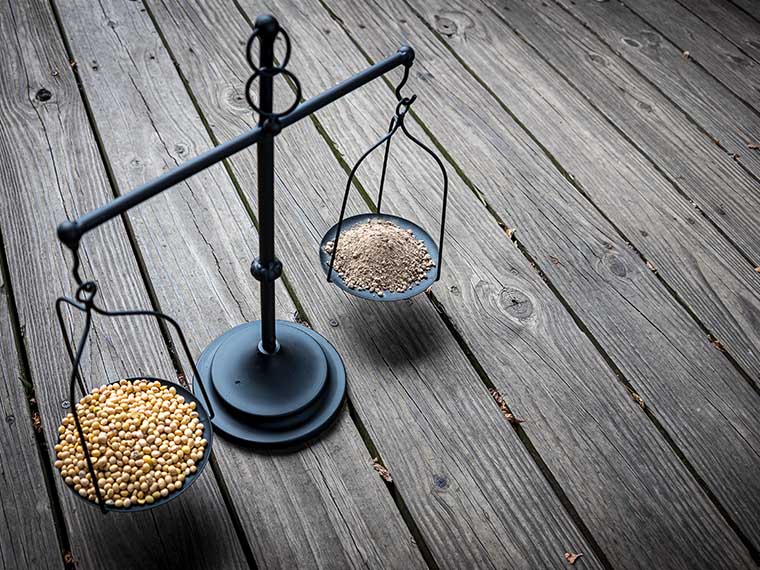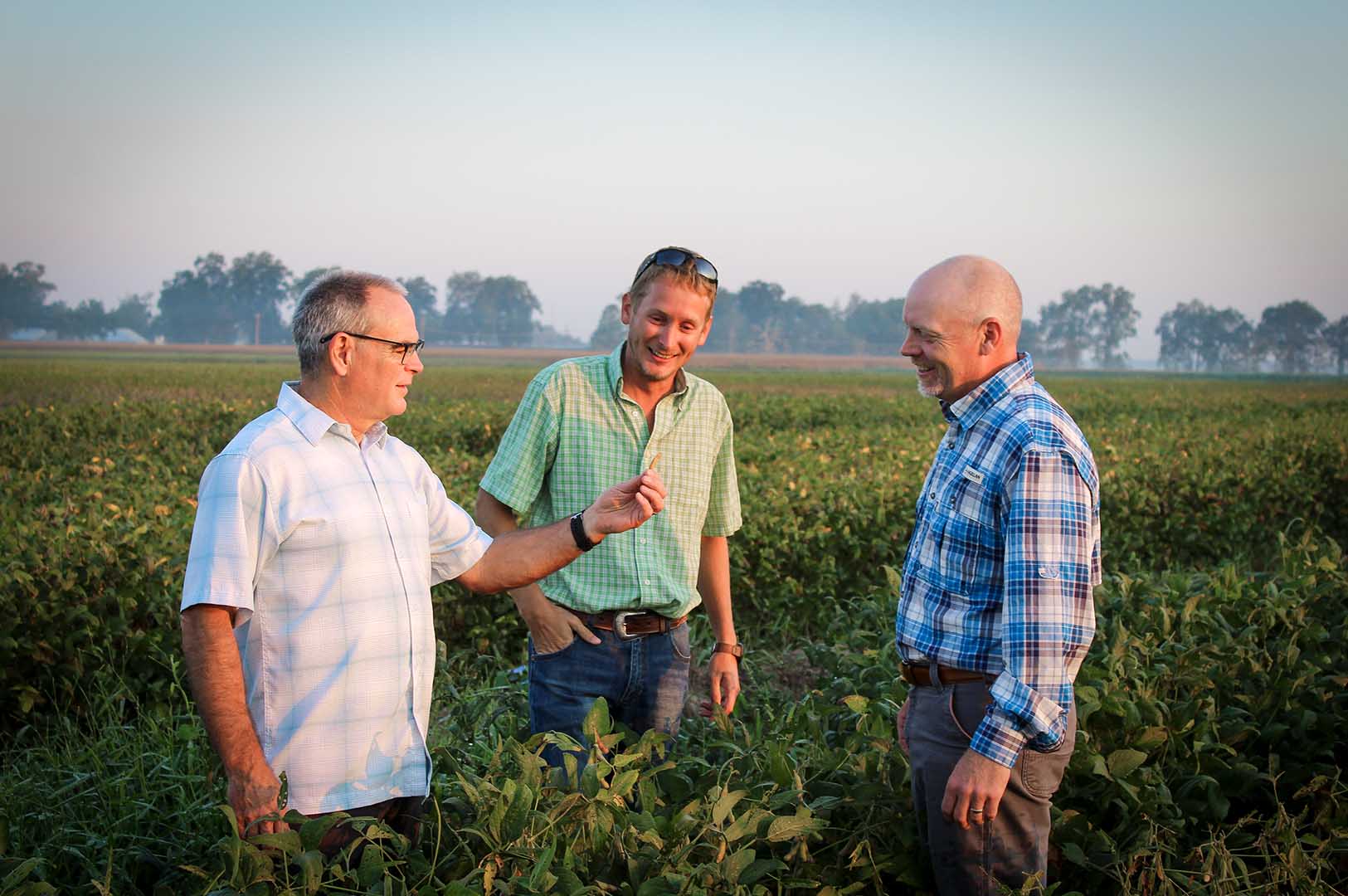The information presented on this page may be dated. It may refer to situations which have changed or people who are no longer affiliated with the university. It is archived as part of Mississippi State University's history.
The Natural Resources Conservation Service's (NRCS) Conservation Stewardship Program incentivizes growers to adopt conservation practices including reduced tillage and the planting of cover crops. The trend seems to be catching on nationally with a 50 percent increase in cover crop acreage from 2012 to 2017, according to the most recent U.S. Census of Agriculture. Midsouth producers, however, have been slow to adopt these practices. That's why MAFES scientists have partnered with the U.S. Department of Agriculture's Agricultural Research Service, or USDA-ARS, on a long-term study to determine if and how these conservation practices can contribute to a grower's bottom line.
The study includes Dr. Jason Krutz, director of MSU's Mississippi Water Resources Research Institute and the interim director of the newly established National Center for Alluvial Aquifer Research.
Krutz said the researchers wanted to determine if a reduced or no tillage system combined with a cover crop would impact yield, net return, and water use efficiency.
"Our goal was to build a bridge between the agronomics and economics of conservation systems that include reduced tillage and cover crops. While these systems might be good for the environment, growers won't make the change if they are going to take an economic hit. From a research standpoint, we need to develop systems that help the environment but are also profitable for the growers," Krutz said.
The five-year study focused on seven different combinations of tillage and cover crops treatments across 21 soybean plots. Soybean was planted in the spring and yield was collected at harvest. After harvest, various tillage and cover crops treatments were applied, and subsequent yield, net returns, and water use efficiency were analyzed in conjunction with each plot's overwintering practices.
Krutz said the team sought to answer three fundamental questions.
"First, we wanted to see if yield was impacted when growers moved from a conventional tillage system to a reduced tillage system, next, we wanted to see if crop yield and net returns were impacted when we added a cover crop to a reduced tillage system, and lastly, we sought to determine if crop productivity and profitability were maintained in zone tillage systems with or without cover crops," Krutz said.
The first question of whether researchers could move into a reduced tillage system without impacting yield was answered in the affirmative with one caveat.
"We found that producers could reduce the tillage and move toward what the NRCS would call a conservation tillage system, which means you would have 30 percent plant residues on the soil surface, but in order for the reduced tillage system to work from a net-return standpoint, subsoiling had to be employed," Krutz said.
Subsoiling, also known as deep tillage, breaks up the soil at a six- to nine-inch depth. Researchers found reduced tillage with subsoiling maintained or improved soybean grain yield, net returns above specified costs, and water use efficiency up to 68 percent in three of four years.
"Reduced tillage is a technical term that means at least one tillage operation has been eliminated. The conventional tillage had multiple tillage operations in the spring and fall. Our reduced tillage systems only have tillage operations in the fall. Thus, we eliminated some tillage but included deep tillage to develop a productive 'reduced' tillage system," Krutz explained.
Regarding the second question, researchers found that a cover crop could not replace subsoiling within a reduced tillage system without negatively impacting net returns.
"The adoption of cover crop production systems in the Midsouth has been slow, largely because of grower concerns over yield stability and on-farm profitability," Krutz said. "We found that replacing subsoiling in this system with a tillage radish cover crop reduced soybean grain yield, net returns, and water use efficiency by 12 percent, 41 percent, and 12 percent, respectively."
The last question the team answered was whether crop yield and net returns were maintained in a zone tillage system.
"Zone tillage is as close as you can get to no tillage in a furrow irrigated environment," Krutz said. "What we mean by zone tillage is that you only make one small pass along the furrow for irrigation purposes. You aren't disturbing the actual beds."
Krutz said that in this case, zone tillage did not impact crop yield or net returns.
"Relative to a conservation tillage system with subsoiling, switching to a zone tillage system with or without a cover crop had no effect on soybean yield, net returns above specified costs, or water use efficiency," he said.
Dr. Martin Locke, who manages the study with Krutz, has been conducting similar research on these same plots for the past 15 years. Locke is the director of the USDA-ARS National Sedimentation Laboratory in Oxford, Mississippi and oversees the agency's Delta Water Management Research Unit in Jonesboro, Arkansas. Locke said the study should help growers make better decisions when it comes to the implementation of conservation practices from a big picture standpoint.
"This research aims to find answers concerning how we can improve the sustainability of the agricultural economy and the health, quality, and quantity of soil and water," Locke said. "The big picture question we hope to address is how can agricultural management be implemented while conserving soil and water?"
The long-term research at the site has also been focused on conservation tillage systems with and without cover crops. Researchers studied cotton the first five years and corn the next five years, before switching to soybeans. Locke said that while the team plans to continue studying tillage and cover crops, they will be making some changes this year.
"Some of these plots have not been tilled since 2003. This year was the last growing season that we maintained that treatment. In fall 2019, we tilled the plots and started over," Locke said. "This will allow us to gauge this year as the last year of a relatively stable system and compare with the next year and years to come as systems in flux."
Locke said the plots are designed to collect environmental data such as erosion, runoff, soil compaction, and soil health and quality. One thing he has observed is that organic matter in the soil-a sign of healthy soils-has increased moderately over time.
"While these conservation practices do increase organic matter in the soil, it isn't a dramatic increase," Locke said. "We have a wet, humid climate, with warm temperatures. These factors contribute to increased microbial activity that breaks down the organic matter. We can expect modest increases over time. They just won't be as dramatic as you may see in places with cooler, dryer climates, like the Midwest."
Locke said they also plan to improve the site's ability to measure irrigation more precisely next year. While changes will be made to certain aspects of the research, he said the overall goal remains the same.
"If you go back to the big issue, we want to contribute to the sustainability of both the rural economy and our natural resources," Locke said. "If this research can determine ways for growers to preserve our soil and water while keeping family farms thriving, then as scientists, we've done a good job."
The research has also been the work of MSU doctoral candidate, Corey Bryant, who plans to graduate with a Ph.D. in agronomy in December 2019. The Mississippi Soybean Promotion Board funds the research.
From a research standpoint, we need to develop systems that help the environment but are also profitable for the growers.
Dr. Jason Krutz
Behind the Science

L. Jason Krutz
Professor; Director, Mississippi Water Resources Research Institute; Interim Director, National Center for Alluvial Aquifer Research
Education: B.S., Environmental Soil and Water Sciences, M.S., Agronomy, University of Arkansas; Ph.D., Agronomy, Texas A&M University
Years At MSU: 7
Focus: Agricultural water quantity and quality
Passion At Work: I'm passionate about developing agricultural production practices that maximize yield and net returns while minimizing consumptive water use and off-site agro-chemical transport.


